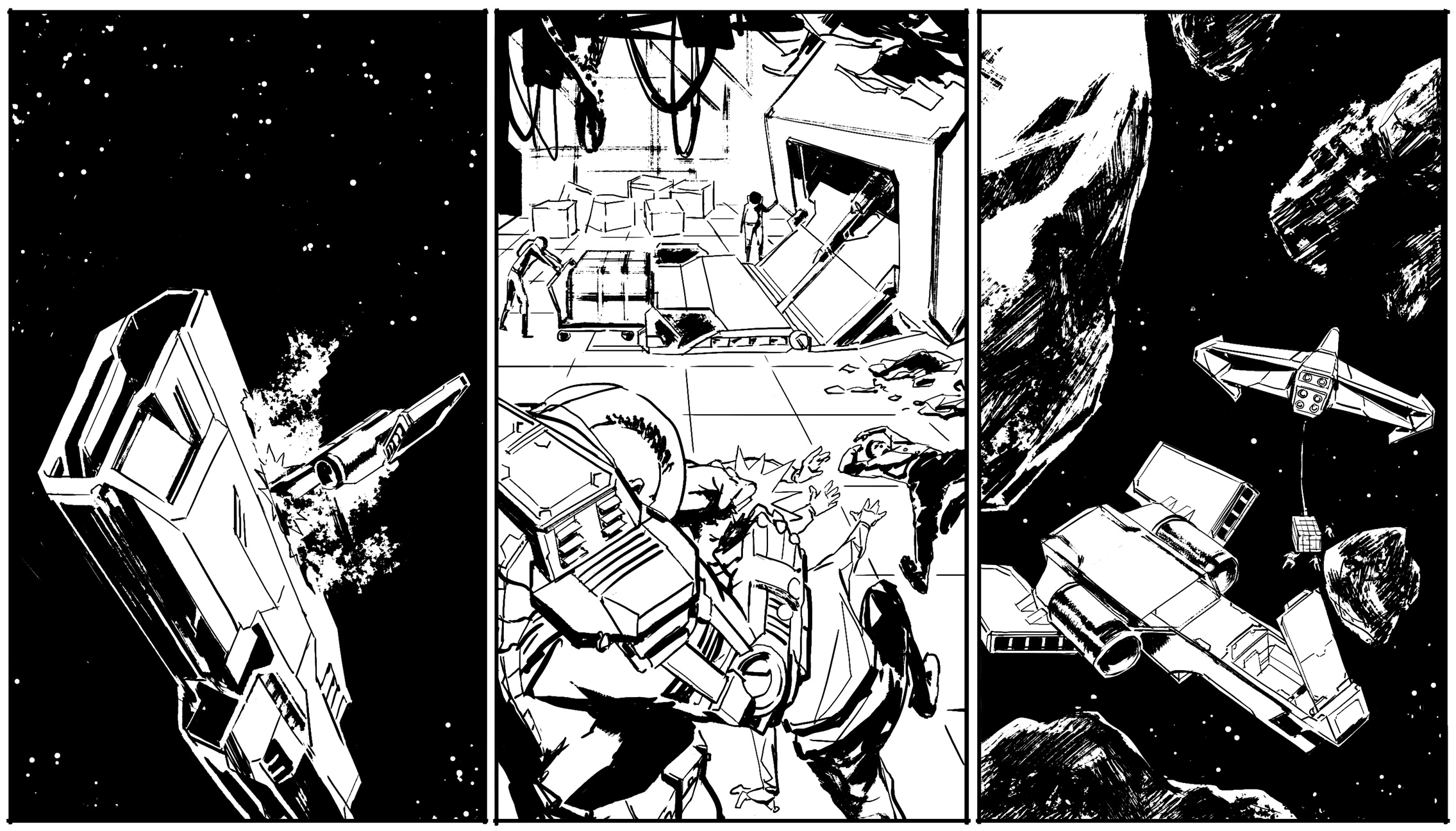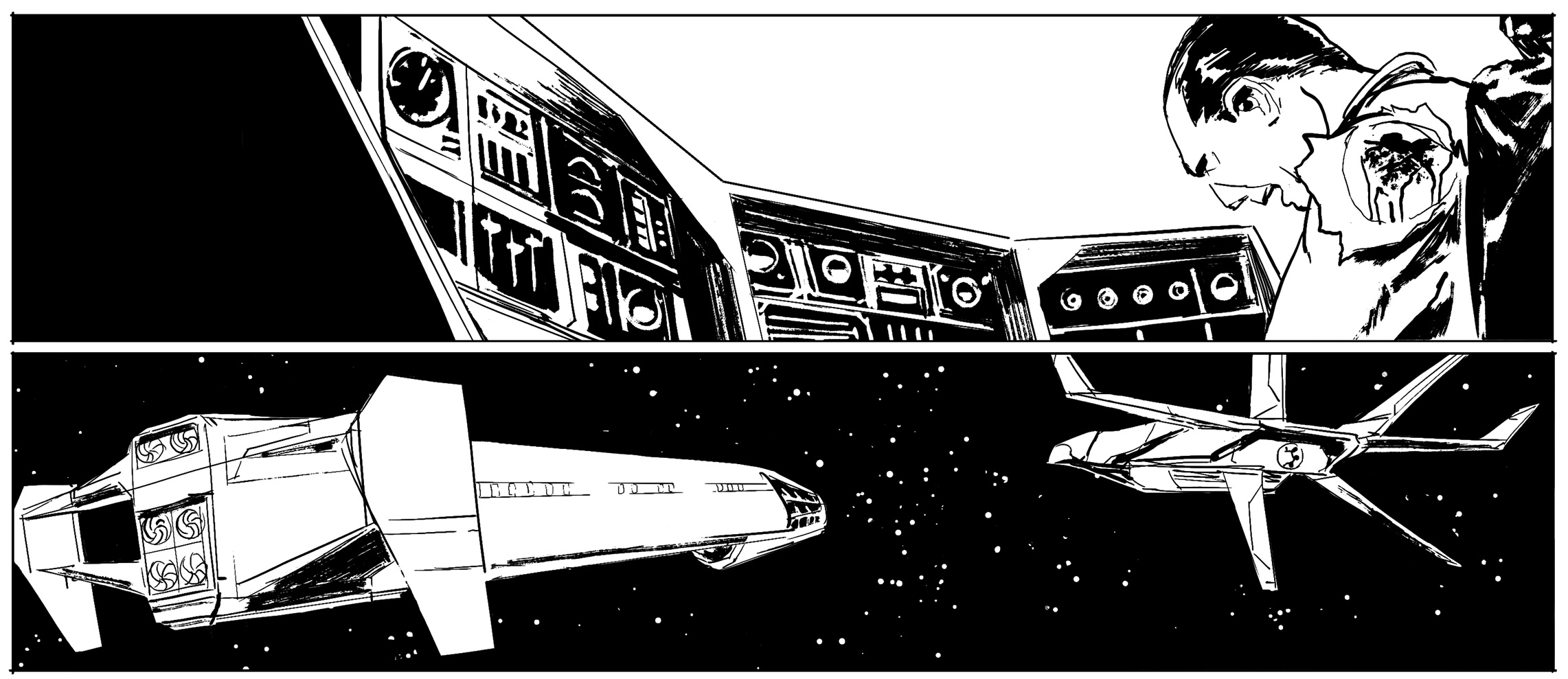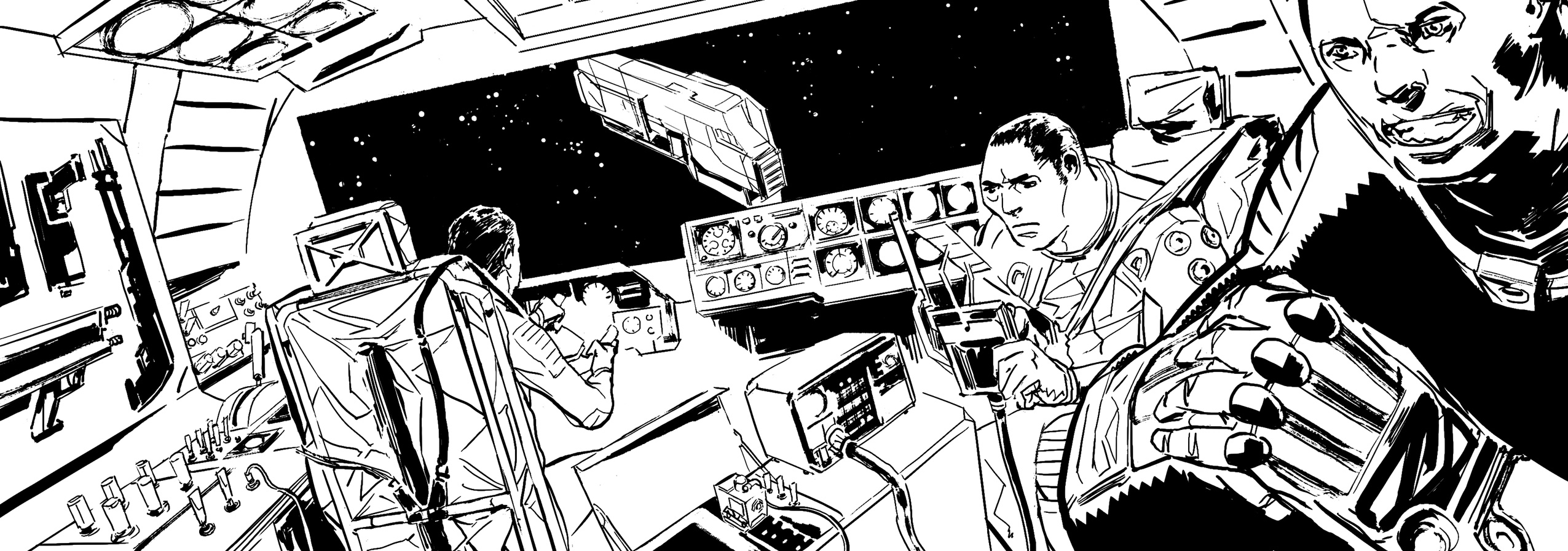The new droids who burst out of Thought Bubble: Daniel Dwyer
18th September 2018
Every year, 2000 AD gives new writers and artists the chance to get their first work for the Galaxy’s Greatest Comic at the annual Thought Bubble convention in Leeds.
Selected by Tharg himself, prospective art droids have their work put before a panel of top artists before one of them is chosen as the winner not only of the competition – but of paid work for 2000 AD! It’s not for the faint of heart but the competition has launched the professional careers of some of the newest talent to grace the pages of 2000 AD!
As would-be droids put the finishing touches to their scripts and art competitions for Thought Bubble this weekend (22-23 September), Richard Bruton chatted to another previous winner about the experience and what it’s meant for them…
Daniel Dwyer won the 2000 AD & Thought Bubble art portfolio competition in 2014 and his artwork graced the pages of 2000 AD in Prog 1932 with the Tharg’s Future Shock: The Big Heist, written by David Baillie.
Daniel, how did you hear about the 2000 AD talent search and what convinced you to enter?
Daniel Dwyer: I sent a submission of several comic pages to 2000 AD a year before I entered the competition at Thought Bubble. Tharg’s reply was short and crisp, mainly criticising my rather overloaded, hard to read panels and the way I inked also could have used some improvement. I always planned to send a subsequent submission but then I read about the competition on 2000 AD‘s website.
What did winning the contest and seeing your work in the pages of 2000 AD mean for you?
DD: It meant a lot. Ensuing from the critique I got, I tried to learn and improve as much as I could during that year until Thought Bubble 2014. And to actually win at the end was just mind-blowing, especially after I saw the other competitors’ works which really impressed me.
Getting my work published at 2000 AD felt simply overwhelming. But as lucky as I felt, when I saw my work right next to the work of professional artists in Prog 1932, I realized how much I still had to learn.
As for the competition itself, can you tell us a little about the actual process of entering, the preparation involved and the terror of pitching in front of the judging panel of experts?
DD: In order to enter the competition you had to prepare the visuals for a Future Shock script which was available via Thought Bubble’s/2000 AD‘s website some weeks before the event took place. Equipped with those pages, at the first day of the main festival, the preliminary round consisted of queuing up at the 2000 AD booth, waiting to get your work critiqued by one of 2000 AD‘s artists. So, standing in line alongside various other attendees, you had enough time to get nervous by looking over your work for the millionth time, noticing what you could have done better.
Jon Davis-Hunt examined my work, being just a real nice and cool guy. He quite liked the perspectives I chose, though he thought them being a bit off here and there, in his eyes they offered a good dynamic feeling. After that there was nothing left to do but to await a message which may or may not permit me to enter the final round the next day!
Finally, standing before the jury, being judged by artists like John McCrea and Chris Weston was quite terrifying but also quite encouraging. Having your work debated on and critiqued during that panel in front of a live audience which could see the pages projected on a big screen, was something surreal. I definitely would have felt devastated if the experts simply would have disliked my work. But it became an insightful discussion about page-layout and the art of leading the reader’s eye by means of composition, implied movement or usage of negative space. Overall, it was just a great experience, one I’m still treasuring.
Since winning the competition, how do you think your work has evolved and where has the competition win and subsequent Future Shock strip taken your comics career?
DD: I think my work has evolved quite a bit, not least because of the advice I got. After winning the competition I drew two stories for the Zarjaz fanzine. The latter one, a Judge Hershey story, I’m feeling especially content with. Also, the enriching experience I made during the competition led me to seek out other contests. So the following year I won the Top Cow/Image talent hunt as well. Other than that, I’m currently collaborating with some authors who have read the Future Shock strip and thereby took notice of my work.
What comics or other art work have you done since the competition and Future Shock and what’s coming up for you in the next year?
DD: Other than what I’ve already told, I’ve worked with a couple of authors on several stories which got stuck in the pitching phase. Apart from that, I did the art for a Top Cow Darkness issue. Besides comics, I’m also making single piece drawings and recently got into screen printing, which is quite fun. A few years back I did animated experimental short films, – some of which are quite embarrassing and others I consider odd but interesting on an aesthetic level.
Right now I’m working on a self-written comic I’m planning on publishing on my website and Instagram in the hopefully not too distant future, presumably early 2019. Besides that I’m collaborating with another artist on a making-of book about a sci-fi movie that actually never existed, for which I’m delivering character designs, vehicle concepts and storyboards.
What advice would you give to up and coming writers and artists about getting into comics in general, and the 2000 AD/Thought Bubble competition in particular?
DD: During the competition the examined main aspect was to evaluate whether you could tell a story or not. So I would advise to study and analyze how your favourite stories unfold visually, structurally and rhythmically over a certain amount of pages, converting the story’s time into expanded plane space. Keep an eye on what is shown, what is left out, and what is indicated and left to your imagination between the panels’ cliffs. Of course being good at drawing stuff like cool spacecrafts, dope combat suits and rock-hewn chins will always be hugely and utterly significant! Just make sure your panels correlate with one another in versatile ways that suit the narration.
Other than that, it’s easier than ever before to get in touch with people and publishers. Seek out critique and show only your best, most recent body of work. Don’t waste your or anyone else’s time by showing work you know you already could do better. I’ve done that in the past, being unsure about the number of pages I should pack into my portfolio. It feels impolite and uncomfortable listening to somebody who is trying to help you by giving advice on matters you already figured out for yourself. Reflect on your work, find out what aspects of sequential storytelling fascinate you and work from that knowledge onward as your creative basis.
When did you first start reading 2000 AD?
DD: I grew up in a rather small town in Germany where it was impossible to get any 2000 AD progs at that time. During my early teenage years, now and then, there were translated paperbacks of collected Judge Dredd storylines like America or the Dredd/Batman crossovers, and Block Mania and The Apocalypse War at my local library. All strictly Dredd, which was great, but I missed out on quite a lot. Especially the art by Arthur Ranson on Button Man and Judge Anderson, which I encountered some years later, and would have loved to experience earlier.
And if you had the chance to work on a dream 2000 AD strip or character, what would it be?
DD: Mega-City One. This behemoth of a city is a character of its own, multifaceted, beautiful and ugly at the same time. Blade Runner on steroids. Some time ago, D’Israeli wrote an interesting piece on his blog on this city’s varying appearances over its multiyear history and through various artists.
And finally, what artists do you count as influences on your art?
DD: There are way too many artists and writers who influenced me and whose work I adore. For the sake of brevity, I’m just listing artists who had an immediate impact on the way I wanted to draw since I was a young teenager: David Mazzucchelli for his overall diverse and dynamic storytelling, character- and mechanical designer Yoji Shinkawa for his mastery of brush and ink, and John McCrea for his talent to convey animated and varied characters. Artists like Moebius, Goseki Kojima, Katsuhiro Otomo and Arthur Ranson influenced me a few years later.




